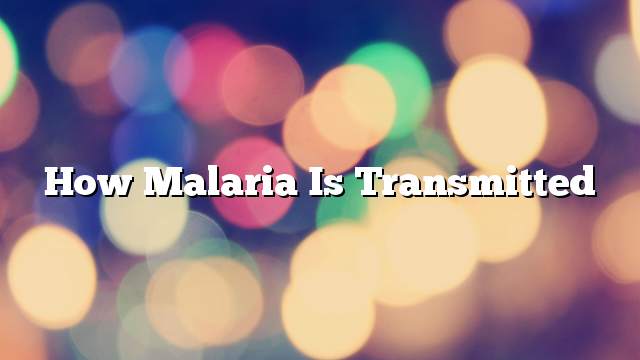Malaria starts when a mosquito carrying the disease bites a person with malaria, so he or she absorbs blood This parasite infects the mosquito in the mosquito digestion system and multiplies and grows in the saliva of the mosquito, so that the mosquito can bite a healthy person and enter the poison of this parasite in his blood. This parasite invades its place of residence and its habitat is the liver, attacking and weakening its cells and multiplying and spreading.
The parasite, which causes malaria, is infected, spread and multiply in the red blood cells, causing injury and damage to them. It occurs in the case of explosion of these infected pellets and when it explodes, toxins and wastes are generated by these parasites and act to infect and invade the rest of the red blood cells.
As for how the disease is transmitted, it is transmitted by an intermediary, the female Anopheles mosquito. And the life cycle of the parasite, it goes through stages:
1. The cycle begins when the female Anopheles mosquito bites a person with malaria, where the blood containing the host (parasite)
2. The host is cooked in the gastrointestinal tract of the mosquito, and the process of maturation lasts 7-20 days
3. The host settles in the salivary glands of the mosquito
4. When the mosquito bites a healthy person, it moves the host to its blood and begins the host’s life in the human body
Within 30-60 minutes, the host moves into the human liver and begins to multiply
Six days after the parasite leaves the liver to attack the red blood cells and multiply causing the explosion and the exit of so-called cytokines and this causes the emergence of symptoms
1. Malaria is a common disease in tropical countries and is one of the leading causes of death in these areas.
2. The disease is caused by a parasite called plasmodium and needs an intermediary, a female Anopheles mosquito.
3 – Symptoms and signs of the disease is high fever and yellowing in the body and symptoms of anemia due to red blood cells explosion.
4 – Diagnosis of the disease after suspicion of the disease is by a picture of the blood of the patient.
5 – Prevention is better than treatment and is done by avoiding mosquitoes and drug prevention.
6 – treatment of the disease includes treatment for symptoms and signs and treatment against parasite
7. Misuse of anti-malarial drugs has led to increased host resistance
And thus to the increased risk of disease and deaths.
Oxford handbook of clinical medicine 8th edition
Dvidson’s principles and practice of medicine 21st edition
infoplease.com/cig/dangerous-diseases-epidemics/malaria.html
